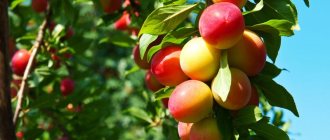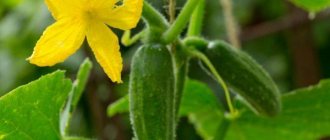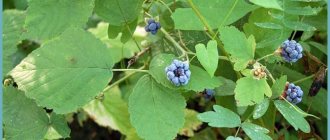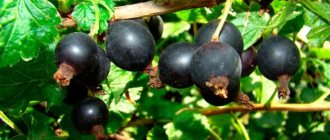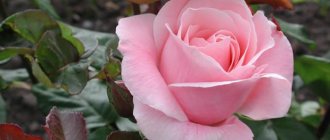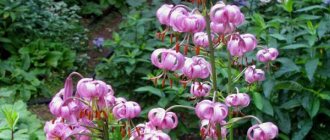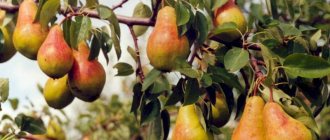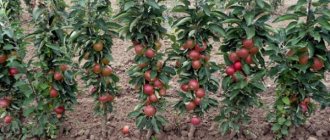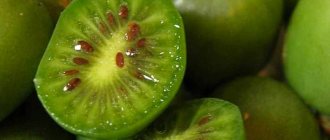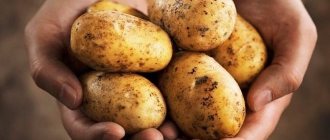Apricot is traditionally perceived as a fruit crop that grows exclusively in the southern sunny regions of our country. Previously, it was considered impossible for such a heat-loving tree with fragrant and tasty fruits to “settle” in the gardens of the Urals and Siberia. The very idea of cultivating a southern fruit in such harsh, unusual conditions was too fantastic. Over the years, thanks to the painstaking and confident work of domestic breeders, this pipe dream has finally come true, and now “southern guests” - real apricots with delicious fruits - are growing in the Ural gardens.
Features of cultivation
The life expectancy of apricot in the Ural region is quite short and is no more than 20 years. Of these, the period of productive fruiting accounts for a maximum of half of this period. Therefore, in order to ensure the annual supply of these sunny fruits, it is necessary to periodically plant new trees in the area where apricots are grown. Not all varieties are able to withstand the winter cold, when frosts reach 30-40 degrees.
The planting location for this heat-loving crop should be sunny, inaccessible to cold northern winds. Then, with good care, apricots in the Urals can produce a good harvest.
Their varieties should be selected according to the climatic characteristics of this region. Apricot does not qualify for soils with high fertility. It can also grow in clayey areas. Only light sandy soils are not suitable for it.
Brief description of culture
Apricot is a deciduous fruit crop. Trees can grow up to 6-7 m, flowering usually occurs in March or April. The first fruits of early varieties ripen at the end of June, and of later varieties - at the end of August.
Many gardeners are interested in the question: how many years does an apricot live and when does it begin to bear fruit after planting? These characteristics depend on many conditions: variety, care, place of cultivation.
Average data:
- apricot can live up to a hundred years;
- the first harvest can be obtained at the age of three, less often in the second year, but very meager;
- The tree bears fruit for up to 30-40 years; the maximum fruiting period is achieved with proper care.
The culture is highly drought and frost resistant. Some selection specimens can withstand frosts up to 30 degrees Celsius.
Selection of seedlings
The choice of high-quality planting material is of great importance for the future harvest. It is best to take well-developed seedlings of the first year of growth. When purchasing them, you should pay attention to the absence of thorns, which are characteristic only of wild varieties.
The branches of cultivated species must be thick, with a small thorn that forms at the grafting site. You should not take seedlings with signs of freezing of the root system or dried out above-ground parts. The likelihood that such plants will take root is practically non-existent.
Selection and preparation of seedlings for planting
The selection of apricot trees for autumn planting should be carried out taking into account the characteristics of a particular variety and its winter hardiness. Planting raw materials must correspond to the climatic zone in which it will grow. This must be taken into account to avoid freezing of plants.
Before choosing a seedling, we recommend reading our article about the best apricot varieties.
When selecting a specific seedling of a future apricot tree, pay attention to the following important nuances:
- The trunk of the seedling must necessarily contain a pronounced grafting zone. This indicates that the tree belongs to a certain variety and guarantees the ripening of fleshy and sweet fruits when compared with trees grown from seeds.
- You need to choose a seedling for autumn planting that is 2 years old. This stage is most favorable for the plant’s adaptation to a new area.
- The selected specimen cannot contain any kind of damage, cracks in the bark, the main trunk must be stronger than the side shoots, without thorns.
- The height of the apricot should be from 1 m to 1.5 m. Deviations from the norm, up or down, indicate improper care of the tree, as well as an excess of applied fertilizers containing nitrogen.
- The roots of an apricot seedling should consist of 1 main and 2-3 lateral shoots, each 20-25 cm long. It is not acceptable for them to be broken, rotten or overdried.
Do not buy seedlings with obvious signs of vegetation. Such a tree will quickly die.
When selecting an apricot seedling, the shade of the bark plays a big role:
- A red standard or with a dark shade of brown is characteristic of winter-hardy varieties;
- the light green trunk is characteristic of southern representatives of fruit trees.
Planting seedlings
Apricots are usually planted in the Urals in the spring, then during the summer the tree will get stronger and be better prepared for winter. It is recommended to dig the planting hole in the fall to allow the soil to settle. Its dimensions should be such that the root system of the seedling easily fits; usually the depth is about half a meter, and the diameter is at least 70 centimeters.
It is necessary to plant apricots in the Urals (it is recommended to grow them with all requirements taken into account), maintaining a distance between seedlings of at least five meters. The soil mixture must consist of several components. This is, as a rule, peat, clay, sand with a small addition of manure and lime flour. It’s a good idea to add a mixture of superphosphate and ash (500 g and 2 kg, respectively).
In the center of the planting hole, a peg is driven in, which is necessary for the future garter of the tree, around which a mound of soil mixture is poured. Before this, a drainage layer must be laid, which can serve as gravel or small pebbles. Then the seedling is placed in a hole, while its roots are carefully straightened and covered with earth. Before planting, they are dipped in soil mash. The root collar should not be deeply buried; it should be about 4 centimeters above the soil level. The plant is tied up and properly watered around the periphery with water.
Planting East Siberian apricot in Siberia in spring
One of the most popular varieties of fruit crops recommended for growing in the Siberian region is the East Siberian apricot, which has excellent taste and large fruits, a round shape of a yellow-green hue, and a lateral blush.
To grow this miracle apricot in the garden, it is recommended to know how to properly plant apricots in spring in Siberia:
- Careful selection of site. The fruit crop does not take root well on rough soil that does not allow air and moisture to pass through. Light soil with a slightly alkaline reaction is best suited. In winter, the landing site should not be heavily covered with snow.
- The tree is best planted on a hilly hill or on a mountain slope.
- The East Siberian variety is ideally suited to well-lit areas, protected from draft cold winds.
- The groundwater level of the site should not be higher than 2.5 meters.
Note! To grow apricots, it is recommended to buy seedlings in specialized nurseries in Siberia and the city of Moscow, where qualified consultants will offer grafted trees adapted to the harsh Siberian climatic conditions. Although many gardeners prefer a different method of growing apricots and grow them specifically from the seed. It is recommended to plant the seeds in spring or autumn in small furrows, 5 to 7 cm deep, such shallow planting promotes rapid germination of the seed and the emergence of seedlings
As soon as the plants reach two years of age, they are transplanted to a permanent location in standard-sized planting pits. In early spring, after the snow melts, grown seedlings must be pruned, poorly overwintered branches removed and overgrown branches shortened. Cut marks are treated with garden varnish
It is recommended to plant the seeds in spring or autumn in small furrows, 5 to 7 cm deep; such shallow planting promotes rapid seed germination and the emergence of seedlings. As soon as the plants reach two years of age, they are transplanted to a permanent location in standard-sized planting pits. In early spring, after the snow melts, grown seedlings must be pruned, poorly overwintered branches removed and overgrown branches shortened. Cut marks are treated with garden varnish
Although many gardeners prefer a different method of growing apricots and grow them specifically from the seed. It is recommended to plant the seeds in spring or autumn in small furrows, 5 to 7 cm deep; such shallow planting promotes rapid seed germination and the emergence of seedlings. As soon as the plants reach two years of age, they are transplanted to a permanent location in standard-sized planting pits. In early spring, after the snow melts, grown seedlings must be pruned, poorly overwintered branches removed and overgrown branches shortened. Cut marks are treated with garden varnish.
Important! This sanitary pruning is performed annually.
How best to form a seedling
To properly form a fruit tree, you need to know the rules for pruning seedlings:
- When planting, the tap part of the root of an annual apricot is cut to 15-20 cm. This value is approximate and depends on the size and number of lateral roots, which are also recommended to be shortened to 20 cm.
- In order for the apricot to grow in the form of a trunk, its central conductor is cut so that at a height of more than half a meter there are from 12 to 16 buds left for the development of “skeletal” side branches.
- If the apricot needs to be formed as a bush, then in this case it is necessary to select several of the most massive shoots, evenly spaced in a circle, and the rest will have to be removed. The remaining shoots must be shortened by a quarter or a third of the length. There is one nuance in this pruning: the lower branches are trimmed less, and the upper ones - more.
Pruning of young apricot seedlings is carried out in order to form a strong tree crown with a uniform circular distribution of lateral “skeletal” branches with strong angles of departure from the trunk.
How best to form a seedling
Apricot care
In the Urals it has significant differences. You have to start taking care of the young seedling from the very first days of planting. The time of spring thaw is the most dangerous period for plants. When a large amount of snow melts, the root collar may become flooded, which can cause it to swell and ultimately lead to the death of the tree. Therefore, care includes mandatory mulching of the soil and drainage of excess water.
In the future, the apricot needs timely watering, fertilizing and pruning. This drought-tolerant plant does not require much water. More frequent watering is required only during the period of fruit set and ripening.
The nuances of planting apricots depending on the region
Apricot is a southern crop. The plant feels most favorable in warm latitudes . In the Urals, Siberia and the middle zone, some climatic features are taken into account when planting.
In regions with harsh winters, trees are planted at higher elevations, and during the cold season they are covered with non-woven material or film insulation.
In Siberia, the Urals and central Russia, nest planting is popular, when 2-5 seedlings are placed in a hole. This method has a number of advantages: plants are protected from sunburn and frost, saving space in the garden. The diameter of the planting hole is 1-1.5 m. The seedlings are placed at a distance of 30-40 cm from each other. The process of planting in the soil is similar to planting one tree.
Planting apricots in different regions has its own nuances:
- In central Russia, due to harsh winters, the heat-loving apricot is planted on a hillock. A mound with a diameter of 2-3 m and a height of at least 70 cm is erected on the site. This allows the roots to quickly warm up. Planting apricots in lowlands is unacceptable.
- In the Moscow region, apricots are also planted on a hill, but due to groundwater, a slate or metal base is placed at the bottom of the planting hole.
- The most suitable planting method for the Urals and Siberia is with seeds. Several pieces are placed in the holes and after germination the seedlings are cared for.
Top dressing
Depending on their age, apricots are fertilized in the Urals. Growing without fertilizing in this climatic zone is impossible, but their excess can negatively affect the development of the plant. Resistance to diseases decreases, the process of fruit ripening slows down, and rapid growth of shoots occurs.
When plants reach two years of age, they require up to 15 kg of organic fertilizers with the addition of superphosphate (130 g), ammonium nitrate (50 g) and potassium chloride (50 g). For a plant whose age is 4–5 years, the amount of these components needs to be increased by 2 times, for an 8-year-old - by 3 times, etc. Potassium has a very beneficial effect on apricots, increasing productivity, improving the taste of the fruit and influencing their size.
Blackberry varieties for Siberia
The Rubus genus is grown on an industrial scale in North America. In Russia, it is planted mainly by summer residents in the Leningrad region, and in the Moscow region, and in the Far East, and in the Crimea.
Blackberries take root and bear fruit in Siberia:
- Taylor;
- Agawam;
- Lawton;
- Thornfree.
The varieties are valued for their large berries and decorative appearance. All of them can withstand frost, but in harsh climates they take shelter for the winter.
Early
In Siberia, it is recommended to plant blackberries, which ripen not in September, when it is already cold, but in early summer. The Eldorado variety takes root in regions with harsh climates. Erect bushes have long shoots covered with large thorns. In early June, the Giant blackberries ripen. The fruit weighs only 7 g, but the plant produces a good harvest and is valued for its high winter hardiness.
One of the new early hybrids, Black Butte, is distinguished by large fruits; individual specimens weigh 20–23 grams. The oval berries of Agawam blackberries are harvested in several stages. The bushes of this variety are of medium height, thick shoots, falling down, dotted with brown thorns. The plant can withstand frosts down to -30 °C.
With an average ripening period
In temperate climates, the blackberry variety Tupi takes root. An erect bush with small thorns is rarely affected by diseases and can withstand frosts under cover. The harvest ripens by early August. The weight of one berry reaches 9–10 grams. The Lawton variety is distinguished by its rapid ripening; in a favorable year, a whole bucket of small blackberries is harvested from the bush.
Late ripening
In regions where summers are short, varieties with early ripening are planted, but in the south of Siberia, Texas blackberries, bred by Michurin, are grown. In August, the creeping bushes ripen with aromatic, sour berries weighing about 10 grams, which can be canned and frozen.
Chokeberry blackberries must be covered for the winter. The harvest is harvested in the last month of summer and in September. One branch of the plant bears 15–17 small fruits.
Shade-tolerant
Blackberries take root in different conditions, but the taste of the berries deteriorates with a lack of light, in damp and rainy weather. The shrub loves the sun, but some varieties thrive in the shade. These include Agave, its advantages are called:
- exceptional frost resistance;
- high productivity;
- good berry taste.
The Thornless Evergreen variety grows in the shade. There are no thorns on the shoots of the plant. One cluster bears more than 60 small fruits.
Frost-resistant
Darrow blackberries adapt well to the cold winters of Siberia. An erect bush covered with thorns does not die at a temperature of -35 °C.
They have high frost resistance:
- El Dorado;
- Agawam;
- Snyder.
The American hybrid Thornfree pleases with large berries. A powerful plant with long shoots does not suffer from diseases and tolerates cold winters normally, but under cover.
Repairers
To increase the yield of blackberries, the bushes are thinned, leaving no more than 5 branches. In Siberia, where cold autumn quickly arrives, among the remontant varieties of plants, strewn with fruits, only a few take root - Black Magic and Ruben with large berries and good winter hardiness, as well as Prime Yang, adapted to unfavorable conditions.
Seasonal work
Planting apricots in the Urals requires performing certain work related to caring for the plant, which depends on the time of year. In autumn, this heat-loving tree must be prepared for frost by creating conditions suitable for wintering. If this is not done, the plant may die. Ruberoid or roofing felt is wrapped around a tree, secured with wire or rope. Such a “fur coat” will protect the plant in winter from temperature changes and severe frosts.
After harvesting, the lower part of the trunk must be whitened so that the tree does not become a wintering site for pests. Pre-winter whitewashing ensures that various insects do not settle in the bark.
First winter
The root system tolerates winter cold quite well, but the young plant in the first year after planting needs additional protection from sudden temperature changes. For the first winter, build a small hut that will protect from wind and severe frost.
You can make such a hut yourself:
- take plastic film and wooden pegs;
- Insert three pegs into the ground and secure;
- Stretch the film on top and sprinkle it with earth from below;
- In the spring this structure can be easily disassembled.
If you have transplanted a tree several years old, you can wrap the trunk in a layer of burlap for the winter. During the winter, periodically hill up with snow.
Trimming
Growing apricots in the Urals, varieties of which produce high yields in these conditions, is impossible without pruning. This procedure is carried out in the spring. Branches growing inside the crown are removed.
Pruning stimulates the growth of new shoots, which are more fertile. It is on them that the bulk of apricots are formed. In addition, the risk of overloading the tree is eliminated. Pruning the crown allows you to regulate and shape it in the desired direction, so that a huge tree does not grow with a handful of fruits at the very top.
Usually the crown is formed according to a sparsely tiered type, when the branches are located at intervals of 35-40 cm. The most abundant fruiting occurs on shoots that are 2-3 years old. It is recommended to remove old branches in a timely manner. But you shouldn’t get carried away with too much pruning. This can lead to reduced yields.
How and when to prune an apricot
In addition to fertilizers, pruning has a strong influence on the growth and development of apricot trees. Under its influence, the size of the crown changes, as well as the ratio of the forming shoots. The formation of elongated fruit branches increases. At the same time, their foliage improves, which has a positive effect on their productivity and durability. Pruning also affects the root system. Correct, biologically based pruning of the above-ground part contributes to better development of the root system during all periods of the tree’s life. It activates the growth of suction roots, especially during critical periods. In addition, under its influence, the overall power of the root system increases, and more fibrous roots are formed.
After planting, deep pruning of the skeletal branches and trunk is carried out. For better fruiting of the branches, it is recommended that in the first years after planting, pinching the main shoots during the period when they have developed 12–15 leaves (in early June).
With the help of pruning, conditions are created for obtaining high yields of excellent quality fruit. Apricot pruning must be carried out taking into account the age and biological characteristics of the growth and fruiting of the tree in conjunction with its varietal properties.
Apricot is a fruit crop with high productivity potential, which manifests itself already 3-4 years after planting the tree in the garden. Unpruned trees age prematurely, the fruits become smaller, and diseases develop greatly. Trees without pruning have weak fusion of branches and break under the weight of the harvest. All this leads to periodic fruiting. Therefore, you should start pruning apricots from the first days of planting the tree in the garden. Pruning seedlings is necessary to restore balance between the root system, disturbed when digging seedlings in the nursery, and the above-ground part. This kind of pruning must be done. It provides for the correct placement of side shoots, their reliability, and the strength of fusion.
It is advisable to use seedlings grown in a nursery with one conductor, since this allows the formation of tiers of skeletal branches with a sparse arrangement of branches in the tiers or a plant already formed in the nursery. Pruning after planting should primarily prevent the formation of forks and is carried out depending on the degree of development of the planted trees to obtain aligned plantings.
It takes 3–4 years to create the crown shape before fruiting when growing and caring for apricots. Under natural conditions, apricot is characterized by a tiered arrangement of branches. When forming, branches should be placed in the crown at a distance of 20–25 cm from each other. If any branch develops more than the one growing lower, it is pruned further. Branches extending from the trunk at an acute angle must be deflected using spacers or twine, and those directed inside the crown must be cut to a side branch. Later, pruning regulates growth and fruiting.
When pruning fruit-bearing apricot trees, one strives to obtain new growths to replace old fruit formations and prevent exposure of skeletal branches.
Aging apricot trees, whose growth has remained up to 15-20 cm, are shortened to 2-3 years old wood, and if the growth remains up to 5-10 cm - to the branches of 3-5 year old wood. Such severe pruning is labor-intensive, but helps to improve the health of the tree and improve the quality of the fruit.
The degree of apricot pruning and its regularity have a significant impact on the characteristics of fruiting. With weak, irregular pruning, growth slows down every year, the intensity of the formation of flower buds decreases, and the results of overloading trees with harvest begin to appear more sharply. Apricot is not able to shed excess ovary, therefore, with weak and irregular pruning, it is easily overloaded, the fruits become smaller, lose juiciness and aroma.
When is the best time to prune an apricot tree? There are conflicting opinions about the timing of pruning. Most researchers believe that apricots cannot be pruned in winter, as there is a danger of the cut area drying out, being damaged by low temperatures, and causing gum formation. It is advisable to carry out the main pruning in the spring, when the danger of frost has passed.
Watch the video “Pruning an apricot tree in spring” to better understand how this agricultural technique is performed:
Pests
There are many insect pests that can attack apricots. In the Urals, the cultivation of this tree is also not possible without their participation. The main one is aphids, which can weaken the plant and destroy the harvest. To combat this pest, spray the tree with an infusion of tobacco, dandelion and ash. But mechanical cleaning will be much more effective.
The hawthorn butterfly caterpillar is another pest that often lives on apricots.
The most dangerous thing is the appearance of black borer on the plant. Just one larva of this insect, which manages to penetrate the root system, can destroy the entire tree. The main method of combating it is to spray the plant with Bordeaux mixture. The procedure is performed in the fall, when the leaves fall.
Diseases
It is worth thoroughly studying all possible plant diseases and preventive measures before planting an apricot. In the spring, sharp temperature fluctuations occur in the Urals, which makes trees too susceptible to various diseases caused by fungi and bacteria. The most common of them is moniliosis. The pathogens of this disease that fall on the flowers lead to their drying out and, moving inside the branch, affect all shoots. If measures are not taken in time, you can lose up to 80% of the harvest. All infected fruits and other parts of the plant should be removed immediately and the tree should be sprayed with Bordeaux mixture.
An equally dangerous disease is klyaskerosporiosis (hole spotting). First, small spots with a purple border around the edges appear on the leaves, which gradually turn into holes. On fruits, similar spots form scabs. Bordeaux mixture is also used for treatment, spraying swelling buds in the spring and tree branches after the leaves fall in the fall.
Verticillium wilt can cause the entire tree to dry out. The lower leaves turn yellow, fall off and, once in the ground, infect the roots of the plant.
Any disease is easier to prevent, so more attention should be paid to prevention. To do this, it is necessary to burn all infected parts of the plant, apply a sufficient amount of nitrogen fertilizers and prevent the soil from becoming waterlogged.
By following all the rules of agricultural technology and carefully looking at the trees in order to provide timely help, in general, it is not difficult to get a healthy apricot in the Urals. Growing, photos of damaged plants and treatment methods, proper pruning - all this must be carefully studied so that future harvesting can bring only positive emotions.
Does common hazel grow in the Urals?
Common hazel, better known as hazel, is a fast-growing shrub, sometimes reaching 7 m in height, occasionally forming as a tree (in one trunk). The Latin name of the plant is Corylus avellana.
Did you know? It’s hard to believe when making your way through dense thickets of bushes or looking at its image in a photo, but the hazel tree is the closest relative of the famous Russian birch. Both plants belong to the Betulaceae family, which also includes hornbeam and alder.
In the wild, Corylus avellana is widespread in forests, forest-steppes and steppes of Europe, the Middle East, and the Caucasus. Thanks to its very high frost resistance, the shrub gets along well even in the Arctic Circle - thus, the harsh Ural climate is not an obstacle to cultivating the crop. True, for this purpose it is better to use not wild-growing hazel, but varietal hazel, that is, samples bred through long-term selective selection or hybridization (half-hazelnut). They are distinguished by the largest and most delicious fruits with a thin shell.
Supporting the root collar
With the arrival of spring, the water that appears on the soil surface, freezing and thawing again, causes the death of cambial cells. A tree with a supported root collar can actively bloom, but after a few weeks it slowly dies. This is the most common cause of apricot death in the Urals.
To prevent overheating, the necessary work is carried out after the first snow appears. To do this, snow is shoveled away from the root collar by 20-30 cm so that the ground freezes. The apricot root system is quite resistant to frost. In March, this procedure is repeated, additionally digging grooves to drain melt water.
Recommended apricot varieties
In the conditions of the Urals, it is better to use varieties specially bred for this region for planting. When planting, some of them require the presence of a different tree variety on the site for pollination. Kichiginsky, Piquant, Snezhinsky are the most famous apricots in the Southern Urals. In addition to these, there are other varieties suitable for growing in cold climates.
They are resistant to low temperatures; short summers do not interfere with the ripening of fruits, which taste not much different from their southern counterparts.
- Amur is a winter-hardy and drought-resistant variety with high yields, which sometimes reach 40 kg. The fruits weighing 30 g are covered with yellow ruddy skin. Tree of medium height, with a rounded shape.
- Khabarovsk is a tree with a spreading crown, the yield is quite high (up to 35 kg). The fruits with pale yellow skin and flesh of the same color ripen in late July and early August.
- Seraphim - gives a regular yield of about 30 kg, ripening at the end of July. This is one of the earliest varieties. The pulp of the fruit is creamy and sweet and sour in taste.
These are the most popular apricots in the Urals. The varieties Minusinsky ruddy and Minusinsky amber are recognized as the most winter-hardy. Sibiryak Baikalova is not inferior to them.
All of the above varieties have passed the necessary tests and are recommended for planting in the Ural region.
The best frost-resistant varieties for the Urals
There are many varieties of apricot that develop well in harsh climatic conditions. At the same time, gardeners usually give preference to self-fertile varieties of the crop.
Mountain Abakan
This crop is characterized by a spreading crown reaching a height of 3 meters. This is a frost-resistant variety that has flattened yellow-green fruits. In terms of taste, they are sweet and sour and have juicy pulp. With a prolonged thaw, there is a risk of fruit buds falling off. From 1 tree you can get 15 kilograms of fruit.
Khabarovsk
The harvest can be obtained in the 4th year. Culture requires systematic care. The tree is characterized by a spreading crown. From an adult plant it is possible to obtain 35 kilograms of fruits with excellent taste. The tree tolerates even severe frosts well.
Northern lights
This is an elite variety of apricots, which is characterized by excellent resistance to frost. In this case, the culture can rot. The fruits weigh approximately 30 grams and have medium-density pulp.
East Siberian
This is an early variety that is resistant to frost. With a prolonged thaw, there is a risk of the root collar collapsing, which will lead to freezing of the crop. The fruits have an excellent taste.
Sibiryak Baikalova
This is an excellent variety that can withstand even the most severe frosts. An adult crop yields up to 25 kilograms of apricots. They are large in size and have a sweet taste.
Manchurian
This variety is characterized by a tall tree, reaching 12 meters. The fruits have a sour taste and are well suited for preparation. At the same time, the plant easily tolerates severe Ural frosts.
Chelyabinsk early
This is a versatile variety that is considered partially self-fertile. The fruits ripen quite early. The tree is medium in size and has an open crown. The fruits weigh 16-22 grams and have light orange flesh.
Kichiginsky
This is a mid-late variety that is considered self-sterile. The culture has excellent resistance to frost. It produces small fruits measuring 12-15 grams. They are yellow in color and round in shape.
Spicy
This is a universal variety that is considered mid-late. The culture is partially self-fertile. The tree is medium in size and has a spreading crown. The fruits are round in shape and weigh 16 grams. There is yellow aromatic pulp inside.
Snezhinsky
This is a mid-early variety that is considered partially self-fertile. The plant is characterized by high resistance to frost. The tree reaches 3 meters in height. The fruits are round in shape and weigh 17-22 grams. The pulp has moderate density and a sweet taste.
See also
Description and cultivation of apricot variety Zhigulevsky Souvenir
Read
Uralets
The variety is considered mid-early. The fruits have a universal purpose. The tree is medium in size and has a spreading crown. The fruits are round in shape and yellow in color. There is tender sweet pulp inside.
